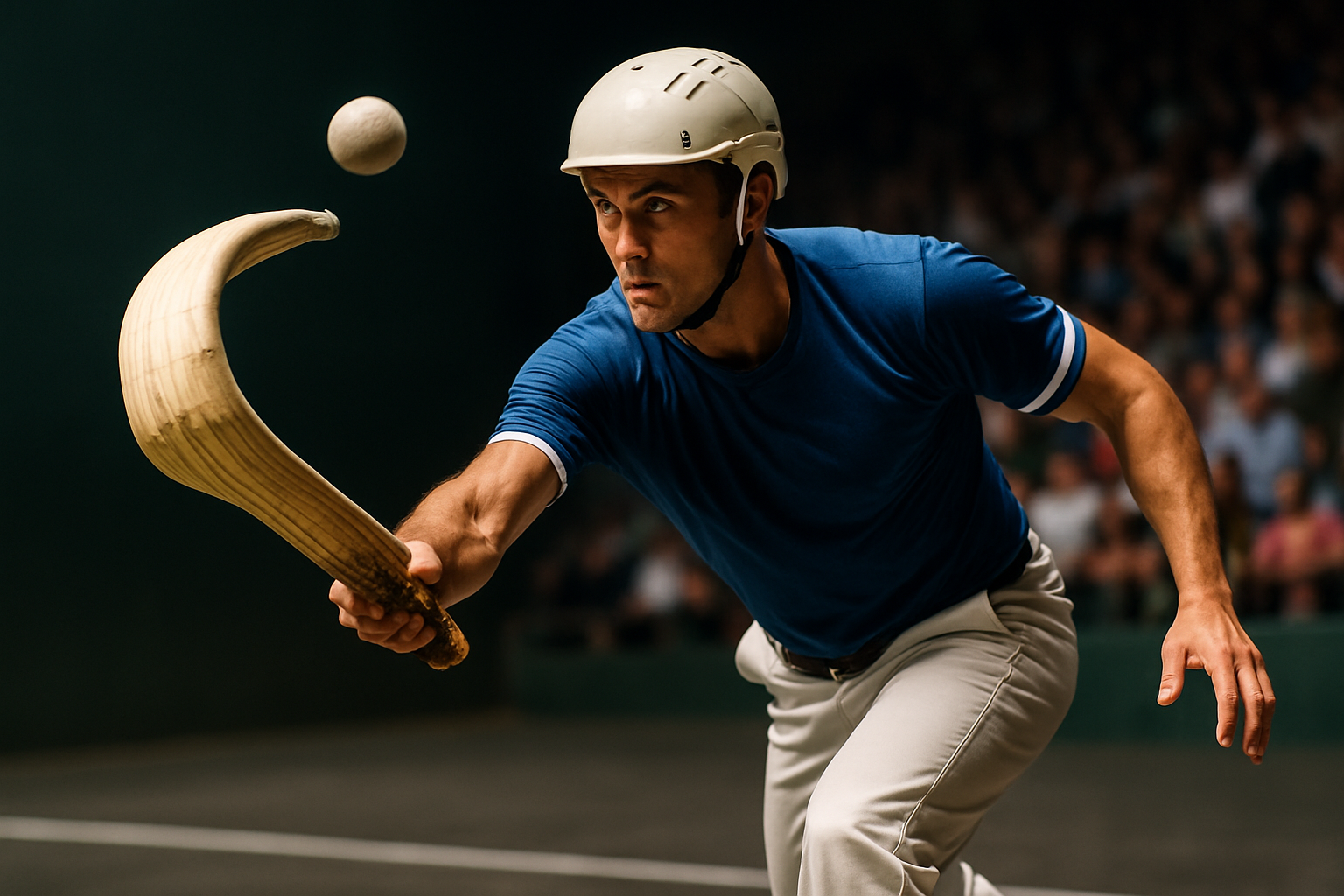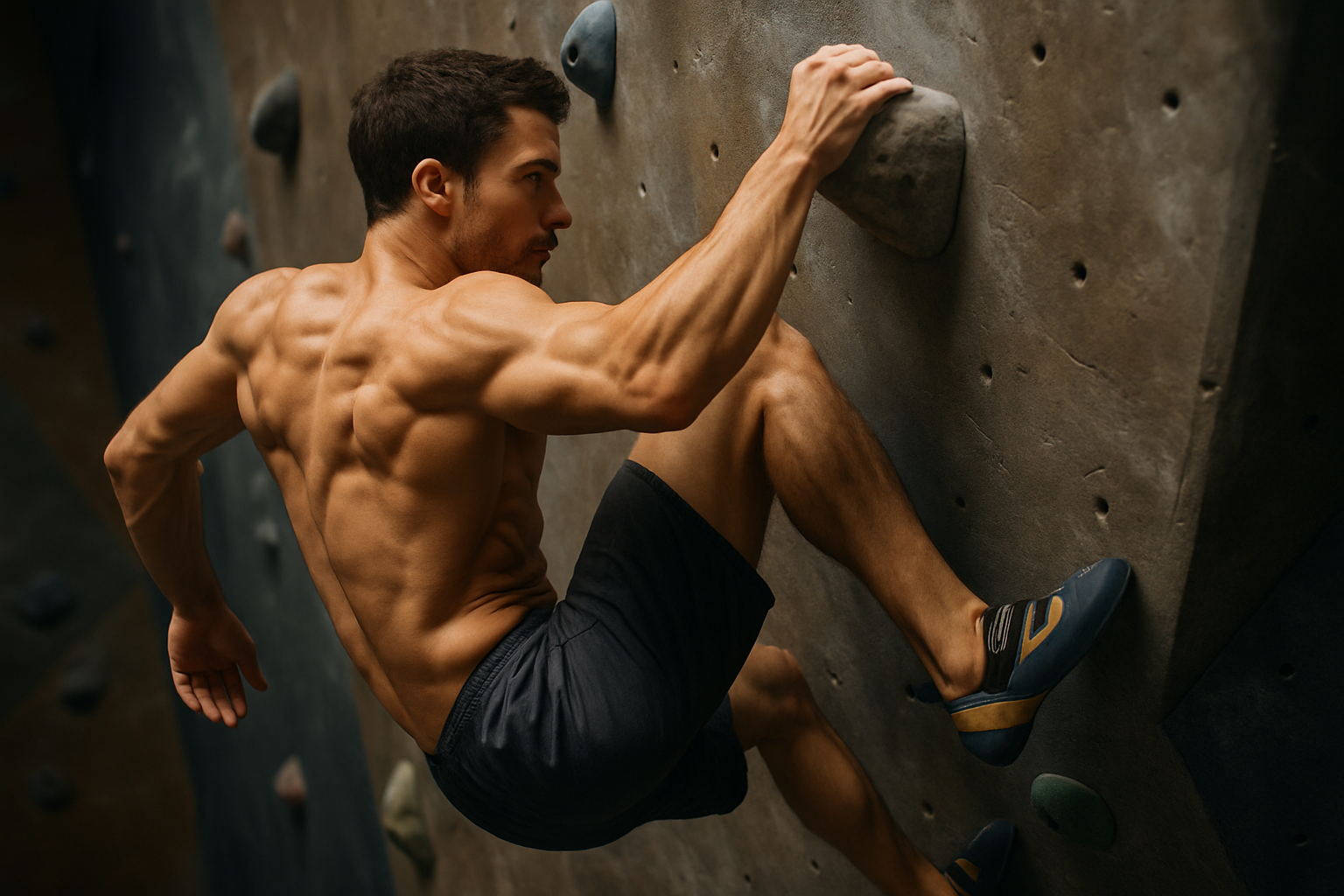Rediscovering Jai Alai: The Fastest Sport You've Never Heard Of
In a world dominated by mainstream sports, a centuries-old Basque game is making an unexpected comeback. Jai Alai, often dubbed the "fastest sport in the world," combines elements of handball, squash, and pelota, creating a high-octane spectacle that leaves spectators breathless. With players hurling a rock-hard ball at speeds exceeding 150 mph using a curved wicker basket, Jai Alai is a testament to human athleticism and skill.

The iconic curved basket, or cesta, used to catch and throw the pelota (ball), was introduced in the 1860s. This innovation revolutionized the game, allowing players to achieve unprecedented speeds and accuracy. By the late 19th century, Jai Alai had spread beyond the Basque Country, gaining popularity in Latin America and eventually reaching the United States in the early 1900s.
The Golden Age and Decline
Jai Alai experienced a golden age in the mid-20th century, particularly in Florida, where it became a major gambling attraction. Frontons (Jai Alai courts) were built across the state, drawing thousands of spectators and generating millions in betting revenue. The sport’s popularity extended to other parts of the United States, with frontons opening in Connecticut, Rhode Island, and even Las Vegas.
However, the 1980s marked the beginning of a steep decline for Jai Alai. Several factors contributed to its downfall, including increased competition from other forms of gambling, allegations of game-fixing, and labor disputes. By the early 2000s, many frontons had closed, and the sport seemed destined for obscurity in the United States.
The Unexpected Renaissance
Against all odds, Jai Alai is experiencing a renaissance in the 21st century. A combination of factors, including nostalgia, the search for unique sporting experiences, and renewed interest in cultural heritage, has breathed new life into this ancient game.
In Florida, where Jai Alai once thrived, innovative approaches are revitalizing the sport. The Magic City Casino in Miami has launched “Magic City Jai Alai,” featuring a modernized version of the game with simplified rules and a focus on entertainment. This new format has attracted a younger audience and sparked interest in the traditional version of the sport.
Outside of its traditional strongholds, Jai Alai is gaining traction as an amateur and recreational sport. Universities and community centers are introducing Jai Alai programs, emphasizing its cultural significance and unique physical demands. This grassroots movement is slowly but surely expanding the sport’s reach and cultivating a new generation of players and fans.
The Physical Demands and Skills of Jai Alai
Jai Alai is often described as one of the most demanding sports in the world, requiring a combination of strength, speed, agility, and hand-eye coordination. Players, known as pelotaris, must master the art of catching and throwing the pelota at breakneck speeds while maintaining precise control.
The cesta, an extension of the player’s arm, is crucial to the game. Made from steam-bent chestnut wood and woven reeds, it requires years of practice to use effectively. Players must learn to catch the pelota in the cesta’s shallow pocket and release it with a whip-like motion, generating incredible velocity.
The physical toll on players is significant. The pelota, made of layered rubber and goat skin, can reach speeds of up to 188 mph – faster than the fastest recorded tennis serve. Injuries are common, ranging from bruises and broken bones to more serious trauma. As a result, pelotaris must maintain peak physical condition and possess lightning-fast reflexes.
Training Methodologies for Jai Alai
Developing the skills necessary to excel in Jai Alai requires a comprehensive training regimen that goes beyond traditional athletic preparation. Aspiring pelotaris typically begin training at a young age, often in Basque schools or academies that specialize in the sport.
The foundation of Jai Alai training lies in mastering the cesta. Players spend countless hours practicing basic catching and throwing techniques, gradually increasing speed and complexity. Wall practice is a fundamental exercise, allowing players to develop accuracy and timing without the pressure of competition.
Strength and conditioning play a crucial role in Jai Alai training. Players focus on exercises that enhance explosive power, agility, and cardiovascular endurance. Plyometric training, sprints, and interval workouts are common components of a pelotari’s fitness routine. Additionally, core strength is emphasized to support the twisting motions required for powerful throws.
Mental preparation is equally important in Jai Alai. The sport demands split-second decision-making and unwavering focus. Visualization techniques, meditation, and sports psychology sessions are often incorporated into training programs to help players maintain composure under pressure.
The Global Spread and Cultural Impact
While Jai Alai’s popularity has waned in some regions, it continues to thrive in others, contributing to a rich tapestry of global sporting culture. In the Basque Country, Jai Alai remains an integral part of cultural identity, with tournaments and exhibitions drawing large crowds and preserving traditional playing styles.
The sport has also found a dedicated following in parts of Latin America, particularly in Cuba, Mexico, and the Philippines. In these countries, Jai Alai has evolved to reflect local customs and preferences, creating unique variations of the game.
The global Jai Alai community, though smaller than in its heyday, remains passionate and committed to preserving and promoting the sport. International tournaments bring together players from different countries, fostering cultural exchange and celebrating the shared heritage of this ancient game.
Technological Advancements in Jai Alai
As Jai Alai adapts to the modern era, technology is playing an increasingly important role in its development and promotion. High-speed cameras and motion analysis software are now used to study and improve player techniques, offering insights that were previously impossible to obtain.
Equipment manufacturing has also benefited from technological advancements. Modern cestas are crafted using computer-aided design and advanced materials, enhancing durability and performance while maintaining traditional aesthetics. Similarly, pelota production has been refined to ensure consistency and optimize playing characteristics.
Virtual reality and augmented reality technologies are being explored as tools for training and fan engagement. These innovations could potentially allow players to practice in simulated environments and provide spectators with immersive viewing experiences, bringing them closer to the action than ever before.
The Future of Jai Alai: Challenges and Opportunities
As Jai Alai navigates its resurgence, it faces both challenges and opportunities. One of the primary hurdles is expanding the sport’s appeal beyond its traditional base. Efforts to simplify rules and create more accessible versions of the game are underway, aimed at attracting new players and spectators.
The gambling aspect of Jai Alai, once its primary draw, presents a complex issue. While betting can generate revenue and excitement, it also carries the risk of overshadowing the sport itself and potentially leading to ethical concerns. Finding a balance between the competitive integrity of the game and its entertainment value will be crucial for its long-term sustainability.
Education and outreach programs are vital for Jai Alai’s growth. Introducing the sport in schools and community centers can help cultivate a new generation of players and fans. Additionally, partnerships with other sports organizations and cultural institutions could provide valuable exposure and resources.
The international Jai Alai community is also exploring ways to standardize rules and regulations across different countries. This effort aims to facilitate more frequent international competitions and potentially pave the way for Jai Alai’s inclusion in major multi-sport events.
Jai Alai’s Ecological Footprint
In an era of increasing environmental awareness, Jai Alai stands out as a relatively low-impact sport. The simplicity of its equipment and playing area means that it has a smaller ecological footprint compared to many other professional sports.
The materials used in Jai Alai equipment are primarily natural and sustainable. The cesta, made from chestnut wood and reeds, is biodegradable and can be produced with minimal environmental impact. The pelota, while containing some synthetic materials, is largely composed of natural rubber and goat skin.
Frontons, the courts where Jai Alai is played, are simple structures that require less energy and resources to maintain compared to large stadiums or arenas. This simplicity aligns well with growing trends towards sustainable sports facilities and eco-friendly event management.
As the sport evolves, there are opportunities to further enhance its environmental credentials. Initiatives such as using recycled materials in equipment production, implementing energy-efficient lighting in frontons, and promoting sustainable transportation options for spectators could position Jai Alai as a leader in eco-conscious sports.
The Health Benefits of Jai Alai
While the professional version of Jai Alai is known for its intensity and potential risks, recreational forms of the sport offer significant health benefits. Engaging in Jai Alai, even at a casual level, provides a full-body workout that combines cardiovascular exercise with strength training.
The dynamic movements required in Jai Alai improve coordination, balance, and spatial awareness. The constant motion and quick directional changes enhance agility and reflexes, skills that are transferable to many other sports and daily activities.
The sport’s emphasis on hand-eye coordination can have cognitive benefits as well. Studies have shown that activities requiring precise timing and spatial judgment can improve brain function and potentially reduce the risk of cognitive decline in older adults.
Furthermore, the social aspect of Jai Alai should not be overlooked. As a team sport that fosters community and cultural connection, it can contribute to mental well-being and social cohesion. This social element is particularly valuable in an age where physical activity is often solitary and screen-based.
Jai Alai in Popular Culture
Despite its niche status, Jai Alai has made several notable appearances in popular culture, contributing to its mystique and occasional resurgence in public interest. The sport has been featured in films, television shows, and literature, often portrayed as an exotic or high-stakes backdrop for dramatic storylines.
In literature, Jai Alai has been referenced in works by renowned authors such as Ernest Hemingway, who was known to frequent Jai Alai matches during his time in Cuba. These literary nods have helped maintain a certain romantic allure around the sport, particularly among cultural enthusiasts.
The visual spectacle of Jai Alai has also made it a favorite for filmmakers looking to add excitement or local color to their scenes. From James Bond films to Miami Vice, the sport’s appearances in popular media have contributed to its enduring presence in the public imagination, even as its mainstream popularity fluctuated.
More recently, documentaries and online content creators have begun to explore Jai Alai’s rich history and current state, introducing the sport to new audiences through digital platforms. This renewed media attention plays a crucial role in the sport’s ongoing revival, sparking curiosity and potentially attracting new players and fans.
The Role of Women in Jai Alai
Historically, Jai Alai has been a male-dominated sport, with professional leagues and major tournaments exclusively featuring men. However, recent years have seen a growing movement to increase women’s participation and representation in the sport.
In the Basque Country, efforts are underway to promote Jai Alai among young girls and women. Women’s tournaments and exhibitions are becoming more common, showcasing the skill and athleticism of female pelotaris. These events are crucial in challenging traditional gender norms within the sport and inspiring the next generation of female players.
The inclusion of women in Jai Alai extends beyond the playing court. Women are increasingly taking on roles in coaching, administration, and promotion of the sport. This diversification is bringing fresh perspectives and ideas to Jai Alai, contributing to its modernization and broader appeal.
As the sport continues to evolve, the full integration of women at all levels of Jai Alai will be essential for its growth and relevance in the 21st century. Initiatives to provide equal opportunities, resources, and recognition for female pelotaris are not only a matter of fairness but also a strategic imperative for the sport’s future.
Jai Alai’s Influence on Other Sports
While Jai Alai remains a niche sport, its unique characteristics have influenced and inspired developments in other athletic disciplines. The high-speed, reactive nature of the game has provided valuable insights for sports scientists and coaches working in various fields.
The biomechanics of the Jai Alai throw, with its emphasis on rotational power and precision, has been studied by researchers looking to improve techniques in sports like baseball and cricket. The whip-like action used by pelotaris to generate speed has parallels in tennis serves and golf swings, leading to cross-pollination of training methods.
In the realm of equipment design, the cesta’s ability to dramatically increase the speed and distance of throws has inspired innovations in other sports. For example, the development of oversized tennis rackets and golf club heads drew partly on the principles demonstrated by the Jai Alai cesta.
The sport’s emphasis on spatial awareness and split-second decision-making has also found applications in training programs for sports ranging from basketball to martial arts. The cognitive demands of Jai Alai provide a unique model for developing mental agility in high-pressure athletic situations.
Preserving Jai Alai’s Heritage
As Jai Alai navigates its place in the modern sporting landscape, there is a growing recognition of the importance of preserving its rich cultural heritage. Museums and cultural centers dedicated to Jai Alai have been established in the Basque Country and other regions where the sport has deep roots.
These institutions play a crucial role in educating the public about Jai Alai’s history, traditions, and cultural significance. They house collections of historical equipment, photographs, and memorabilia, offering visitors a tangible connection to the sport’s past.
Efforts are also underway to document the oral history of Jai Alai through interviews with veteran players, coaches, and fans. These accounts provide invaluable insights into the sport’s development and its impact on communities over the decades.
Preserving traditional playing styles and techniques is another important aspect of maintaining Jai Alai’s heritage. While the sport continues to evolve, there is a conscious effort to ensure that the fundamental skills and strategies that define Jai Alai are passed down to new generations of players.
The Economic Impact of Jai Alai
While no longer the gambling juggernaut it once was, Jai Alai continues to have a significant economic impact in regions where it maintains a strong presence. In the Basque Country, the sport contributes to the local economy through tourism, equipment manufacturing, and event organization.
The revival of Jai Alai in places like Miami has created new job opportunities, not only for players but also for support staff, trainers, and facility managers. The sport’s unique appeal has the potential to drive sports tourism, attracting visitors interested in experiencing this fast-paced, culturally rich game.
The manufacturing of Jai Alai equipment, particularly the hand-crafted cestas, supports artisanal industries and helps preserve traditional craftsmanship. As interest in the sport grows, there may be opportunities for expansion in this niche market.
Furthermore, the potential for Jai Alai as a televised and streamed sport remains largely untapped. With the right promotion and presentation, Jai Alai could carve out a place in the competitive sports media landscape, opening up new revenue streams through broadcasting rights and sponsorships.
Conclusion: The Enduring Appeal of Jai Alai
As we look to the future, Jai Alai stands at a crossroads. Its revival in recent years demonstrates the enduring appeal of this ancient sport, with its unique blend of athleticism, skill, and cultural significance. The challenges it faces – from expanding its audience to adapting to modern sporting expectations – are considerable, but not insurmountable.
The sport’s rich history, combined with its potential for innovation, positions Jai Alai as a fascinating case study in the evolution of athletic traditions. Its ability to connect people to their cultural roots while offering an exhilarating spectator experience sets it apart in an increasingly homogenized sporting world.
As Jai Alai continues to adapt and grow, it offers valuable lessons about the importance of preserving sporting heritage while embracing change. The passion of its players and fans, coupled with efforts to modernize and promote the game, suggests that the world’s fastest sport may yet have its best days ahead. Whether as a professional competition, a recreational activity, or a cultural touchstone, Jai Alai’s journey is far from over – it is, in many ways, just beginning its next exciting chapter.





